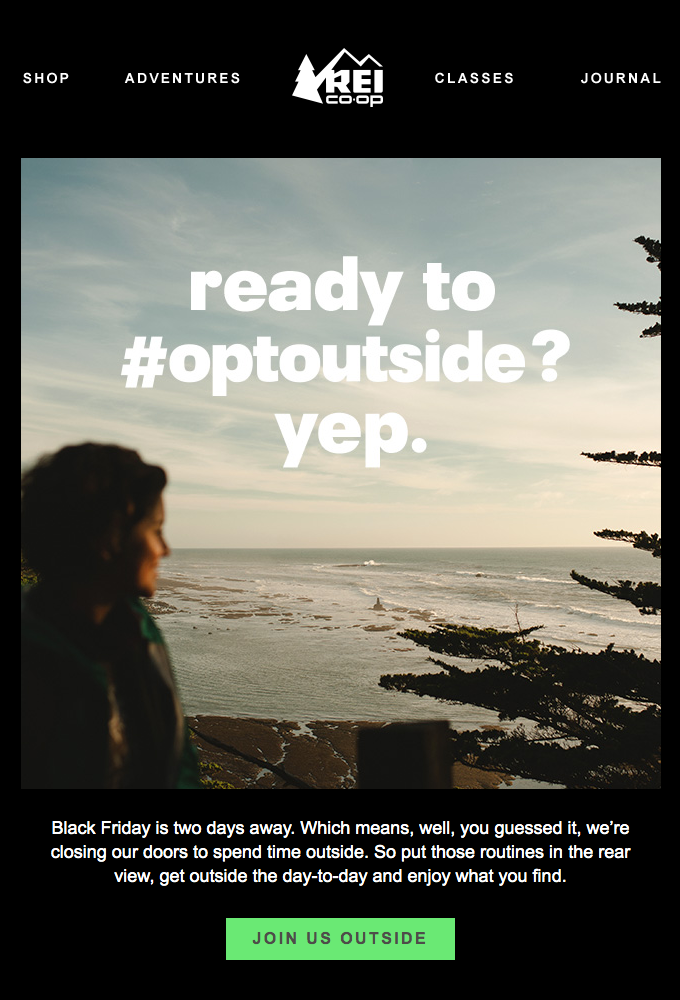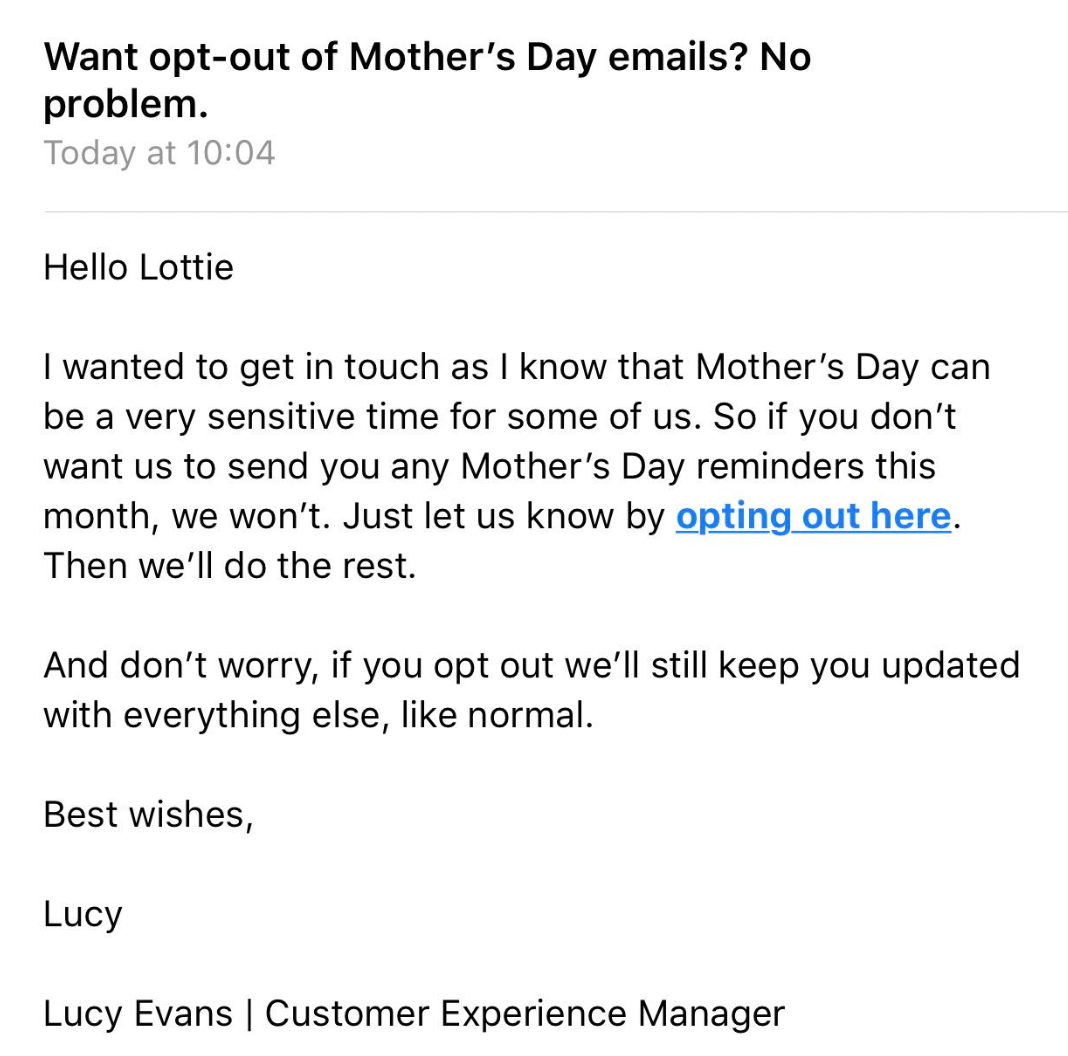Accessibility vs. Inclusion: What it Takes to Create More Inclusive Email Marketing Experiences
In case you haven’t heard, email accessibility is a big deal. We’ve seen more folks talking about accessibility through blog posts, conference sessions, and social media.
At Litmus, we’ve invested in tools to help make more accessible emails, talked about it on our podcast, and written about it extensively in The Ultimate Guide to Email Accessibility ebook. And, at Litmus Live, we have a number of amazing talks lined up on creating more accessible emails for subscribers.
With so much of a focus on accessibility, it’s easy to think that a lot of the hard work in email is done or close to done. After all, once our email templates pass a suite of accessibility checks, what’s left to do beyond sending more emails? But, even with the most accessible HTML template, there’s still a ton of work to do to take emails to the next level: creating truly inclusive email experiences.
Is your email accessible?Litmus’ Accessibility Checks make it easy to test your email against accessibility best practices. See how you can improve and make better emails for everyone. |
What does inclusion mean?
A lot of times, you’ll hear accessibility and inclusion used interchangeably. Heck, we even talk about building more inclusive emails in our Accessibility Checks launch post. But, there’s a subtle, yet important, difference between the two terms.
Generally speaking, accessibility is about the logistics and mechanics of building an email campaign. The new Litmus Accessibility Checks look at functional aspects of an HTML email to see if people using assistive technology like screen readers can make use of the email. While there are visual design aspects to accessibility, most accessibility improvements are driven by the code underlying every email campaign.
Inclusion, on the other hand, aims to create emails that embrace the variety of human differences that subscribers experience. As such, inclusion focuses more on the strategy, content, and overall subscriber experience as opposed to code.
In a recent post for the Only Influencers blog, I defined the two as:
- Accessible
An email is accessible when its content is available to—and functionality can be operated by—anyone, regardless of ability. - Inclusive
Design that embraces the full range of human diversity, with respect to ability, language, culture, gender, age, and other forms of human difference.
They go hand-in-hand, but they are very much a “tactics vs. strategy and content” relationship.
This all begs the question:
How can we create more inclusive email experiences?
Once we have the mechanics of accessibility largely figured out, how can we look to our overall email strategy and content to embrace the beauty and diversity that is the human experience?
Well, there are quite a few ways, actually. Whether you’re updating and improving your sign up forms and unsubscribe process, creating more diverse content, or rethinking your email send strategy, we have multiple opportunities to create more inclusive email experiences for our subscribers, regardless of industry.
Make things easier for subscribers
So much of both accessibility and inclusion is about making it easier for anyone to interact with content. Accessibility is about removing hurdles for users with varying abilities in single email campaigns—but when it comes to inclusion, we should focus on removing hurdles in the signup, content, and unsubscribe process, so that a wider variety of subscribers can happily engage with our brands.
When it comes to the signup process, we should aim to simplify our signup forms as much as possible while respecting the subscriber’s preferences and privacy. Only ask for necessary information and use follow-up surveys or customer data to help fill out subscriber profiles. And, at all costs, avoid dark patterns in signup forms like pre-ticked checkboxes. Not only is this more respectful of subscribers, but it’s now legally required by GDPR, which states that “Silence, pre-ticked boxes or inactivity should not constitute consent.”
Removing hurdles in the content often boils down to copywriting and design. Favoring simpler, responsive layouts with a clear hierarchy is a great first step. But ruthlessly editing copy to make it more readable and human should be one of your major goals. Even for people without disabilities, simpler copy is almost always better.
At last year’s Litmus Live, speaker Tom Tate made the case for more succinct copy from a marketing standpoint:
The average adult reader can read 250 to 300 words per minute. If the average reading time for an email is 11 seconds, then the ideal length of an email is around 50 words.
– Tom Tate
But working groups like the W3C have more practical concerns that emphasize creating more inclusive experiences for everyone:
There are people with disabilities, including reading disabilities, even among highly educated users with specialized knowledge of the subject matter. It may be possible to accommodate these users by making the text more readable.
– The W3C Working Group
When in doubt, use the “reading test”: Read your email out loud and see if it sounds natural and easy to understand. This can be to yourself, a colleague, or your best friend from high school who you haven’t seen in 15 years, but hearing copy out loud is one of the easiest ways to tell whether or not it’s working.
Finally, when it comes to the end of the subscriber relationship, respect people’s wishes by making the unsubscribe process as quick and painless as possible. Remove hurdles like filling in online forms to process unsubscribes—and process them immediately. There is no excuse to have a two-week unsubscribe period. This is another case where the GDPR is clear:
The data subject shall have the right to withdraw his or her consent at any time. It shall be as easy to withdraw as to give consent.
Embrace Diversity and Representation
It’s easy to write and design for yourself or people like you. It’s so much harder to write and design for people that are different than you. Embracing and representing those different experiences is the key to creating more inclusive email programs.
There are three good ways to do that.
- Use diverse imagery While stock photography and graphics don’t have the best reputation, they are still used all the time in email marketing. Unfortunately, so many of those resources feature affluent, white, western, able-bodied, and cisgender people. I hate to break it to you, but the majority of the world doesn’t fit neatly into all of those categories. By using those resources, we’re actively excluding people from our campaigns.Fortunately, a lot of traditional stock resource suppliers, and a whole crop of newer companies, are embracing diversity in their assets. Shayna Hodkin has a great roundup of resources from earlier this year on the InVision blog. While all of them are relatively new, most of the juggernauts in the industry, like Shutterstock, iStockPhoto, and Adobe Stock, all have a growing collection of diverse assets.
If you’re working with an in-house team or agency, encourage them to hire a diverse group of models and locations to create more inclusive content.
- Translate and localize content More and more marketers are sending to global audiences. While that comes with legal and technical challenges, like adhering to legislation like CASL and GDPR, it also comes with challenges for creating inclusive emails.If you’re sending emails to specific segments based on location, you should be translating that content as a first step. But a lot of translations don’t take into account local idioms, customs, and norms. Using online services and computers to translate content can be quick and cost-effective, but without the help of local, native speakers, we run the risk of sending an email that can be confusing and funny on one hand or offensive and dangerous on the other.
By localizing content, we take into account the cultural differences between different groups of subscribers and adapt the copy, visuals, and design of an email to best include them.
- Hire more diverse teams Finally, you should try to hire more diverse groups of people.While it’s common to hear about whether a candidate is a “culture fit” or not, this often leads to homogeneity in the workplace and the same biases being perpetuated. By having a more diverse team, you have representation from different experiences and viewpoints throughout the email creation process, leading to representation from those experiences in the final product. For subscribers with diverse backgrounds, that representation can be absolutely crucial to feeling seen and included by a brand.
Be Respectful of Subscribers
When it comes down to it, inclusion is basically about respecting people, regardless of how similar or different they are from ourselves. In the context of email, that respect can be shown in our overall email strategy.
There have been a lot of reports over the years about the effects of technology and screen time on our mental health. Recently, companies like Apple and Google have introduced the idea of screen time tracking to iOS and Android devices, allowing people to see how much time they spend on their device and take steps to lessen that amount of time.
What if we did the same in email?
A classic case of this is retailer REI flipping the script on Black Friday. A few years ago, instead of sending countless emails leading up to and on Black Friday like every other retailer, they sent a single campaign encouraging subscribers to close their laptops, turn off their phones, and get away from the blind consumerism of Black Friday. They encouraged everyone to #OptOutside.

In doing so, they showed respect for their customers’ mental, physical, and financial health. What would happen if more companies took this approach?
Another option could be making it easier for subscribers to tailor their email preferences. Instead of either having an on/off, subscribed or unsubscribed, approach, how about creating an email preference center that let folks dictate how often people want to hear from you? Instead of unsubscribing completely, people could opt into once-a-week or once-a-month emails.
A great example of this can be found in Bloom & Wild’s Mother’s Day opt-out campaign. The team at Bloom & Wild practiced empathy and consideration for their customers by allowing them to opt-out specifically of Mother’s Day emails, but not all marketing emails. By putting subscriber respect ahead of all else, they created trust and deepened the bond between customer and brand.

If you don’t have the resources or skills to implement a preference center like that, you could be more respectful of subscriber needs by reaching out to them directly. Running a few surveys to see what subscribers value, what they hate, and what they want more of is a great way to create and exercise communication. At the very least, you should do away with the “no-reply” email address in your campaigns. Instead of preventing people from giving you feedback, include them in the email marketing process by encouraging feedback and working it into your email creation process.
How are you building inclusive experiences?
Are you practicing empathy and building inclusive experiences in your own email campaigns? Know of any great examples of others doing the same? Share them in the comments below!

Jason Rodriguez
Jason Rodriguez was the Community & Product Evangelist at Litmus
